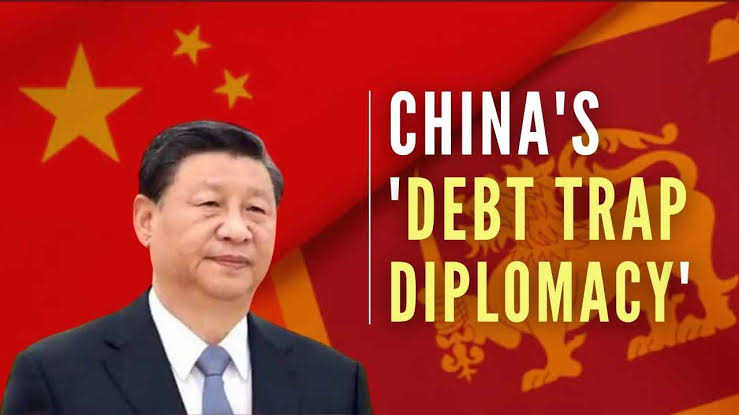China’s debt-trap diplomacy

Over the last decade, China has played an increasing role in providing loans to countries across the globe – especially in the Global South, which, in conjunction with its Belt and Road Initiative (B&R.I.), is tied in to so called infrastructural development.
However due to high interest rates and certain clauses of the loan, China has been accused of practising “debt-trap diplomacy”. This is a term to describe an international financial relationship where a creditor country or institution extends debt to a borrowing nation partially or solely to increase the lender’s political leverage. The creditor country is said to extend excessive credit to a debtor country with the intention of extracting economic or political concessions when the debtor country becomes unable to meet its repayment obligations. The conditions of the loans are often not publicized. The borrowed money commonly pays for contractors and materials sourced from the creditor country.
The term was introduced less than a decade ago for discussing International loans to several African and Asian countries. Through its $1 trillion ‘one belt, one road’ initiative, China began supporting infrastructure projects in strategically located developing countries, often by extending huge loans to their governments. As a result, some of these countries begun to be saddled with debt, leaving them even more firmly under China’s thumb. It was even suggested that these countries were being “recolonized”.
As seen in Pakistan, Sri Lanka, Nepal, Maldives and few African countries there is truth in this claim. Guyana received (comparatively) massive loans from China (for example, the CJIA Modernization and the Demerara Harbour Bridge) with more in the offing, such the Corentyne River Bridge.
Concerned citizens raised eyebrows about the high interest rates of this source of financing, though it had to be pointed out that alternative financing has not been forthcoming, even though Guyana is one of the fastest growing economies in the world, and is the beneficiary of rising oil revenues.
There is no question that, historically, countries with economic or military advantage would attempt to leverage that strength to influence other countries to further their own interests. This was true of Athens millennia ago, and true of the United States for over a century, but more so after WWII, when it played an outsize role in establishing and influencing the policies of the Breton Woods Institutions – the World Bank and the International Monetary Fund (IMF). For instance, when the PNC under Desmond Hoyte resorted to the IMF for loans to deal with country’s US$2.1 debt burden, we were forced to sign on to a Structural Adjustment Program (SAP) that was based on the premises of the Washington Consensus, that reflected the US ideological position as opposed to the socialist premises of the “Cooperative Republic”.
China is now the largest bilateral lender in the world, and clearly its influence has increased. Since 2005, China Development Bank and China-Export Import Bank have provided more than $136 billion in loan commitments to Latin American and Caribbean (LAC) countries and state-owned firms. After the COVID hiatus, in 2022 alone, there were US$813M in new debts; this time from Chinese commercial banks which are in any case majority owned by the Government. We owe China US$540M, in comparison to its biggest debtor, Venezuela, with US$60 billion.
China is not just vying for influence vis a vis the US, in which it is evidently locked in an emerging new Cold War, but is practising “debt-trap diplomacy”. Since the accusation was made in 2017, rather than calling in their debt, so that the country has to declare a de facto bankruptcy, China has been renegotiating the loans on quite generous terms. Recent research shows that the Chinese debt-trap accusation is certainly not a myth, since only China is the winner in such a strategy, as the debtor, trapped with unsustainable debt.
Hence, it is up to borrowing countries to follow prudent borrowing practices to ensure their financial flows are sufficient to service debts acquired, regardless of the source of the funding.



